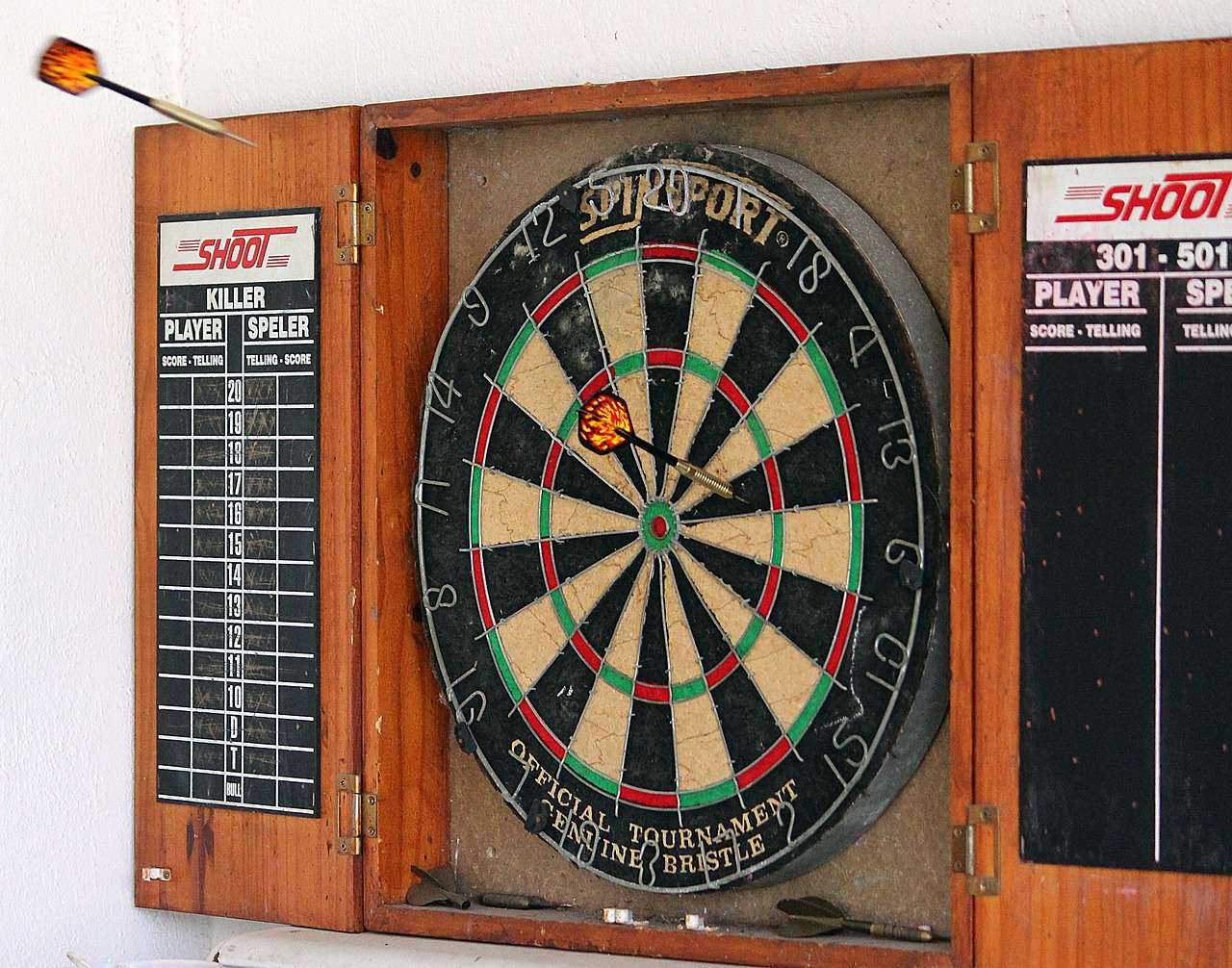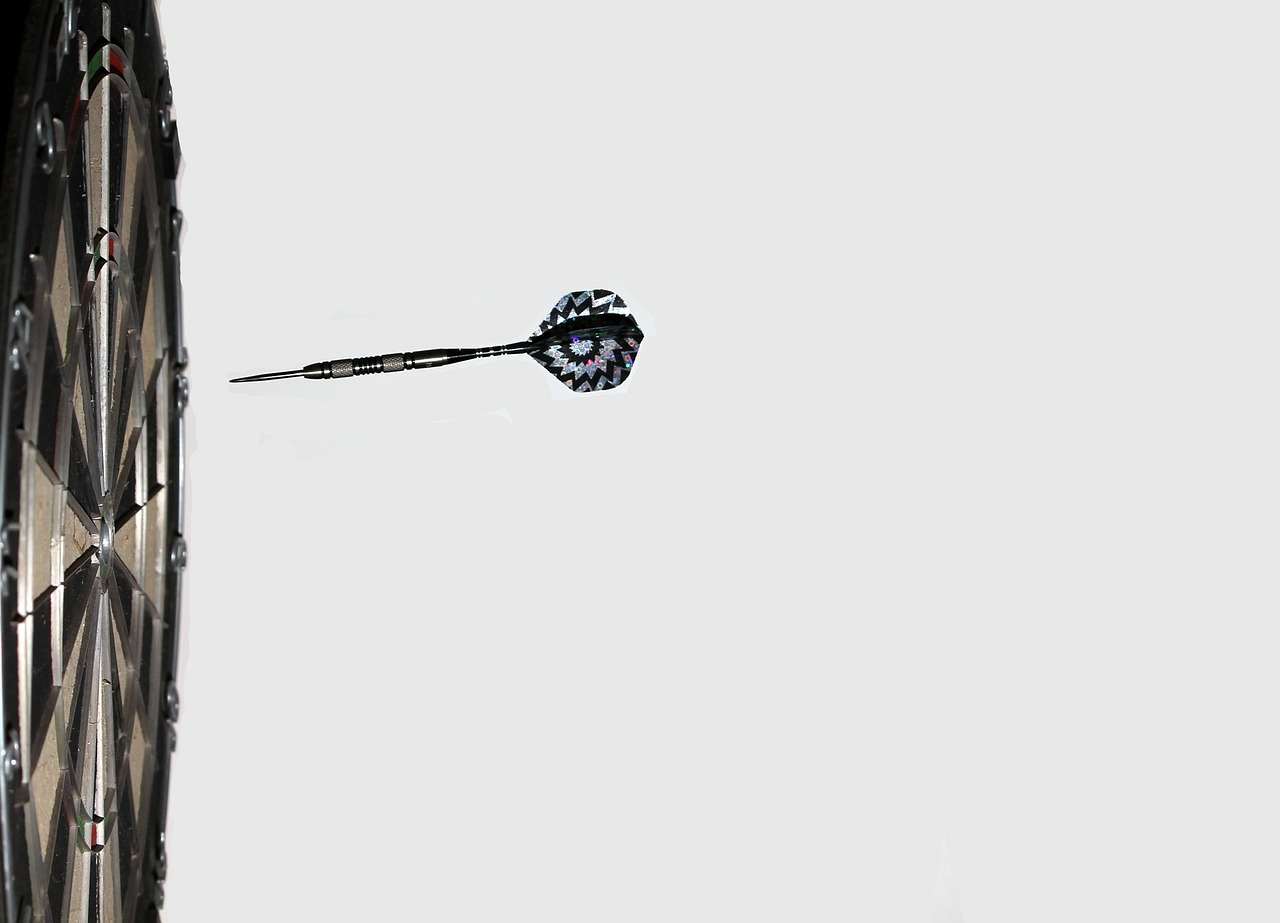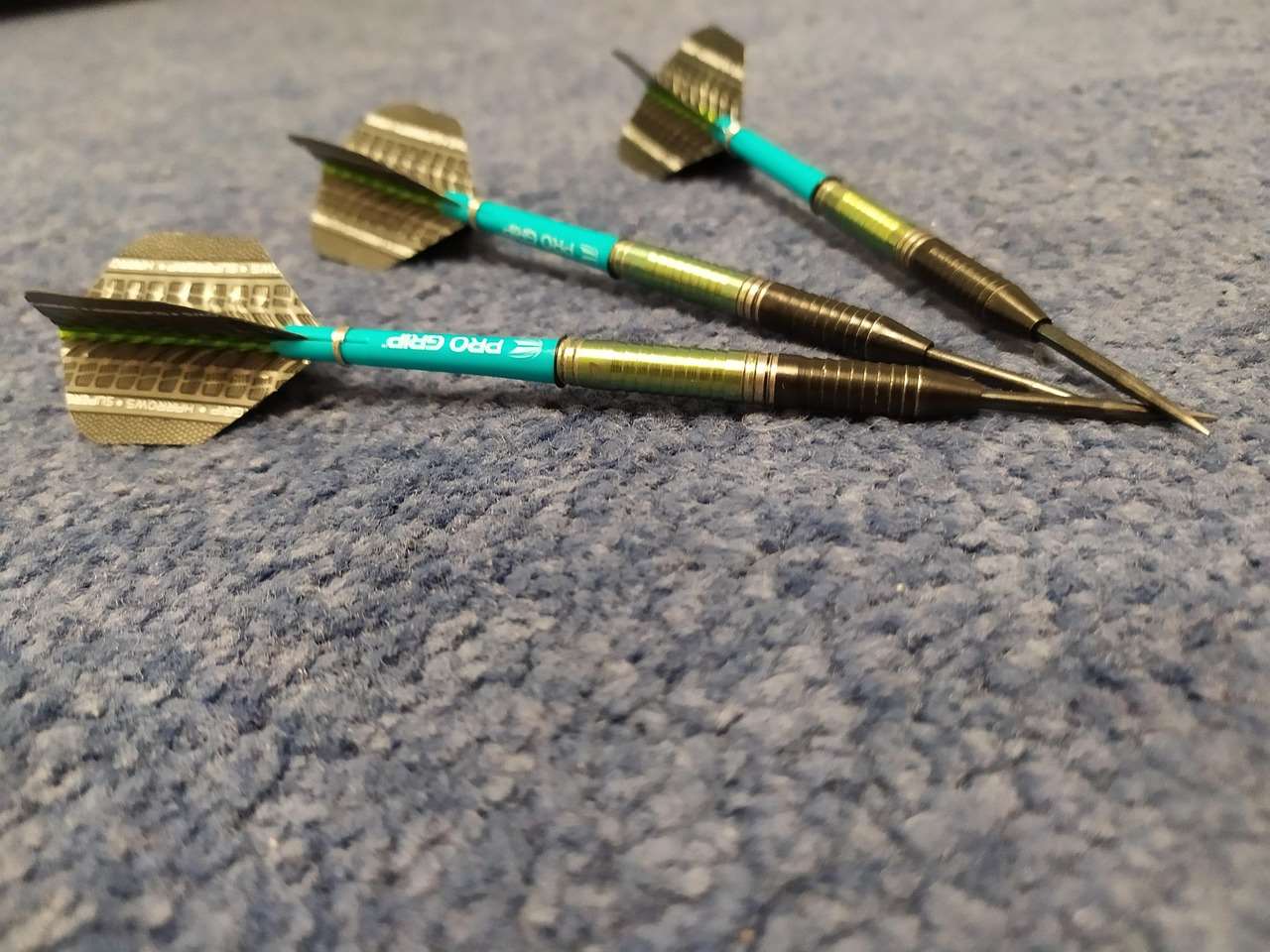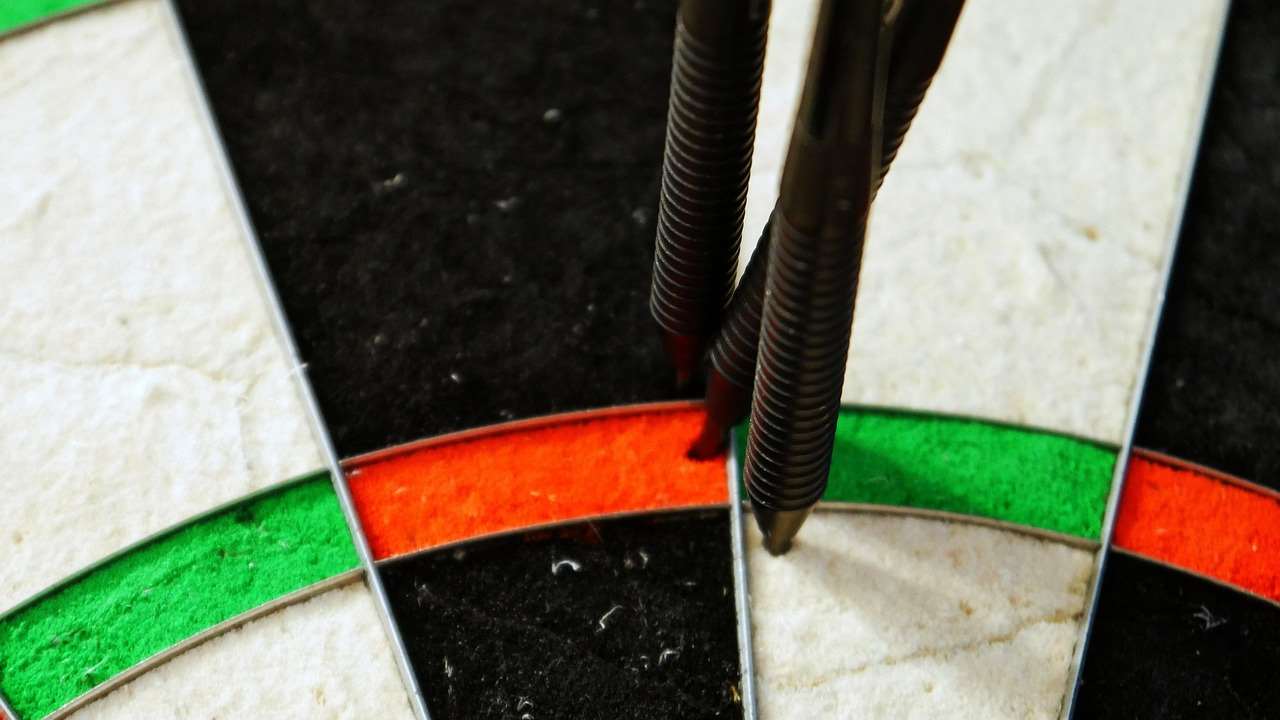The **oche distance** – the line from which dart players throw – hasn’t always been the precise 7 feet 9 1/4 inches (2.37 meters) we know today; its history is a fascinating blend of tradition, standardization, and occasional controversy. This article delves into the **oche distance history evolution**, exploring its origins, standardization efforts, and the factors that influenced its eventual fixed length, including the influence of individuals like **’Jocky’ Wilson**, **manufacturer specifications**, and even alleged mismeasurements.
⚠️ Still Using Pen & Paper (Of een schoolbord)?! ⚠️
Stap in de toekomst! De Dart Teller -app behandelt alle scoren, stelt kassa voor, en volgt uw statistieken automatisch. It's easier than you think!
Probeer de Smart Dart Teller -app gratis!Klaar voor een upgrade? Klik hierboven!
Understanding the Oche: More Than Just a Line
Before diving deep into the **oche distance history evolution**, it’s essential to grasp the fundamental role of the oche in darts. The oche (pronounced “ock-ee”) is the **toe line** or throwing line that a dart player must stand behind when throwing their darts. It’s the defining boundary between the player’s throwing stance and the dartboard itself. Without a clearly defined and consistently measured oche, fair play and competitive integrity would be impossible to maintain. Think of it as the free-throw line in basketball – a crucial marker for a level playing field.
Why is the Oche Distance Important?
- Fairness: Ensures all players throw from the same distance, eliminating any potential advantage.
- Consistency: Allows players to develop a consistent throwing technique.
- Regulation: Standardizes the game across different venues and competitions.
- Professionalism: Contributes to the professional image of darts as a sport.
Early Days of Darts: A Lack of Standardization
The early history of darts is shrouded in some mystery, but one thing is certain: standardization wasn’t a high priority. In the many pubs and informal settings where darts was played, the distance to the dartboard was often **variable and inconsistent**. Factors like the available space, the height of the ceiling, and even the personal preferences of the pub owner could influence how far players stood from the board. This lack of standardization naturally led to variations in playing styles and strategies.

Imagine playing a game where the distance to the target shifted slightly every time you changed pubs. It would be difficult, if not impossible, to develop any kind of consistent technique. While there’s little documentation of exact distances used, anecdotal evidence suggests a wide range existed. This period emphasizes the crucial role formalization played in transforming darts from a casual pastime to a legitimate sport. You can learn more about the history of darts rules in Basic Darts Fundamentals for Beginners.
The Push for Standardization: Shaping the Oche Distance
As darts gained popularity and began to evolve into a more competitive activity, the need for standardization became increasingly apparent. The various dart leagues and organizations that emerged in the late 19th and early 20th centuries began to recognize the importance of establishing clear rules and regulations, including a fixed distance to the dartboard. This was a crucial step in shaping the **oche distance history evolution**.
Several factors influenced the eventual adoption of the 7 feet 9 1/4 inches standard:
- Practicality: The distance needed to be far enough to provide a reasonable challenge but close enough to allow for accurate throwing.
- Historical Precedent: Some sources suggest that the chosen distance was based on commonly used distances in certain regions or popular pubs.
- Trial and Error: It’s likely that various distances were tested and evaluated before a consensus was reached.
The Role of the National Dart Association (NDA) and the British Darts Organisation (BDO)
Organizations like the National Dart Association (NDA) in the United States and the British Darts Organisation (BDO) in the United Kingdom played a significant role in promoting standardization. These organizations established rules and regulations for sanctioned tournaments, including the official distance to the dartboard. Their influence helped to solidify the 7 feet 9 1/4 inches standard as the recognized measurement for competitive play. The BDO was especially influential in the UK and internationally, driving adoption of consistent **game rules**.
7 Feet 9 1/4 Inches: Why This Specific Measurement?
The exact origin of the 7 feet 9 1/4 inches measurement remains somewhat debated, but several theories exist. One popular explanation involves the arm span of a prominent darts player, although solid evidence to support this claim is lacking. It’s more likely that the measurement evolved through a combination of practical considerations and established practices.

Some believe the original measurement was in feet and inches and the metric conversion led to the fractional inch. Regardless of its precise origins, de 7 feet 9 1/4 inches distance eventually became the widely accepted standard, ensuring fairness and consistency across different competitions. Verder, standardizing **dart board setup** provides a consistent target.
Anecdotal Tales and the “Jocky Wilson” Myth
There’s a colorful anecdote that often circulates regarding the oche distance and the legendary darts player, Jocky Wilson. The story goes that Wilson, known for his distinctive throwing style, had his own preferred distance, which was slightly shorter than the official measurement. Some claim that tournament organizers would occasionally adjust the oche to accommodate Wilson’s preference. Echter, these claims are largely unsubstantiated and should be viewed with skepticism. While Wilson undoubtedly had a strong personality and influence, there’s no concrete evidence to suggest that he significantly altered the established standards.
The Metric Conversion and Maintaining Accuracy
With the increasing adoption of the metric system around the world, the oche distance was also converted to metric units. The equivalent metric measurement is 2.37 meters. While the conversion is straightforward, it’s crucial to ensure accuracy when setting up the oche. Small discrepancies can have a noticeable impact on a player’s throwing technique and overall performance.
Here are some tips for ensuring accurate oche measurements:
- Use a reliable measuring tape or laser distance meter.
- Measure from the face of the dartboard to the front edge of the oche.
- Double-check your measurements to minimize errors.
- Ensure the oche is straight and perpendicular to the dartboard.
It’s important to teach youngsters proper board set up while Adapting dart game rules for children.
Manufacturer Specifications and Tournament Regulations
Dartboard manufacturers typically provide detailed specifications for setting up the dartboard, including the correct oche distance. These specifications are usually aligned with the regulations established by major dart organizations. Tournament organizers also have a responsibility to ensure that the oche distance is accurately measured and maintained throughout the competition. Before modifying **rules for beginners** its best to first master the standard rules.

In professional tournaments, officials often use laser measuring devices to verify the oche distance and ensure that it meets the required standards. This level of precision is essential for maintaining fairness and upholding the integrity of the sport.
The Impact of Floor Surfaces and Oche Placement
The type of floor surface and the placement of the oche can also influence a player’s throwing stance and overall comfort. A slippery or uneven floor can make it difficult to maintain balance, while an oche that is not properly secured can shift during play. It’s important to choose a stable and non-slip surface for the throwing area and to ensure that the oche is firmly anchored to the floor. This helps to improve player safety and minimize distractions.
Oche Distance History Evolution: Modern-Day Challenges and Adaptations
Terwijl de 7 feet 9 1/4 inches standard remains the dominant measurement in darts, some adaptations and variations exist, particularly in informal settings or for players with disabilities. Bijvoorbeeld, some players with mobility impairments may require a slightly shorter distance to the dartboard. In these cases, it’s important to prioritize accessibility and inclusivity while still maintaining a reasonable level of fairness. Another key area is How to make darts fairer with handicap rules. This ensures the **competitive balance** is fair.
The **evolution of the oche distance** showcases the dynamic nature of darts as a sport. While the core measurement has remained relatively stable, the game continues to adapt to accommodate different players and playing environments.
The Future of Oche Distance: Technology and Innovation
As technology continues to advance, we may see further innovations in the way the oche distance is measured and enforced. Laser-guided systems, electronic scoring devices, and virtual reality platforms could all play a role in shaping the future of darts and ensuring even greater accuracy and fairness. While the fundamental principles of the game are unlikely to change dramatically, technology has the potential to enhance the playing experience and make darts even more accessible to a wider audience.

The standardization process also includes consistent **dart board setup dimensions**.
Practical Tips for Setting Up Your Oche Correctly
Whether you’re a casual player or a serious competitor, setting up your oche correctly is essential for improving your game and ensuring fair play. Here are some practical tips to help you get it right:
- Use a good quality measuring tape: Invest in a reliable measuring tape that is accurate and easy to read.
- Measure from the correct point: Measure from the face of the dartboard (where the darts land) to the front edge of the oche.
- Mark the oche position clearly: Use tape, paint, or a purpose-built oche to clearly mark the throwing line.
- Ensure the oche is straight: Use a level or straight edge to ensure that the oche is perfectly straight and perpendicular to the dartboard.
- Secure the oche firmly: Use adhesive strips, screws, or other fasteners to secure the oche to the floor and prevent it from shifting during play.
- Test the distance: Throw a few darts from the oche to ensure that the distance feels comfortable and consistent.
The Psychological Impact of the Oche Distance
The **oche distance history evolution** isn’t just about measurements; it also influences the psychological aspect of the game. Knowing that you are throwing from the correct distance can boost your confidence and help you focus on your technique. Omgekeerd, uncertainty about the oche distance can lead to anxiety and negatively impact your performance. Creating a consistent and comfortable throwing environment is crucial for maintaining a positive mental state and achieving your full potential as a darts player. Mastering the fundamentals, including adapting to the standardized **oche distance**, is critical for novice players.
Oche Distance History Evolution: A Summary
The **oche distance history evolution** is a testament to the ongoing quest for standardization and fairness in the sport of darts. From the haphazard distances of early pub games to the precisely measured throwing lines of modern tournaments, the oche has played a crucial role in shaping the game. Terwijl de 7 feet 9 1/4 inches standard has become firmly established, the spirit of innovation and adaptation continues to drive the evolution of darts.

Conclusie: Mastering the Oche and Elevating Your Game
Understanding the **oche distance history evolution** provides context for appreciating the importance of precision and consistency in darts. By setting up your oche correctly and practicing your throwing technique, you can improve your accuracy, boost your confidence, and elevate your game to the next level. Dus, grab your darts, step up to the oche, and embrace the challenge! Now that you understand the standardized dimensions, why not explore some Alternative darts rules for home play? Or delve deeper into the basics with a look at Basic Darts Fundamentals for Beginners.
Hoi, Ik ben Dieter, En ik heb Dartcounter gemaakt (Dartcounterapp.com). Mijn motivatie was geen darts -expert - helemaal tegenovergestelde! Toen ik voor het eerst begon te spelen, Ik hield van het spel, maar vond het moeilijk en afleidend om nauwkeurige scores te houden en statistieken te volgen.
Ik dacht dat ik niet de enige kon zijn die hiermee worstelde. Dus, Ik besloot om een oplossing te bouwen: een eenvoudig te gebruiken applicatie die iedereen, Ongeacht hun ervaringsniveau, zou kunnen gebruiken om moeiteloos te scoren.
Mijn doel voor Dartcounter was eenvoudig: Laat de app de nummers afhandelen - het scoren, de gemiddelden, de statistieken, Zelfs checkout suggesties - zodat spelers puur kunnen richten op hun worp en genieten van het spel. Het begon als een manier om het probleem van mijn eigen beginners op te lossen, En ik ben heel blij dat het is uitgegroeid tot een nuttig hulpmiddel voor de bredere darts -community.